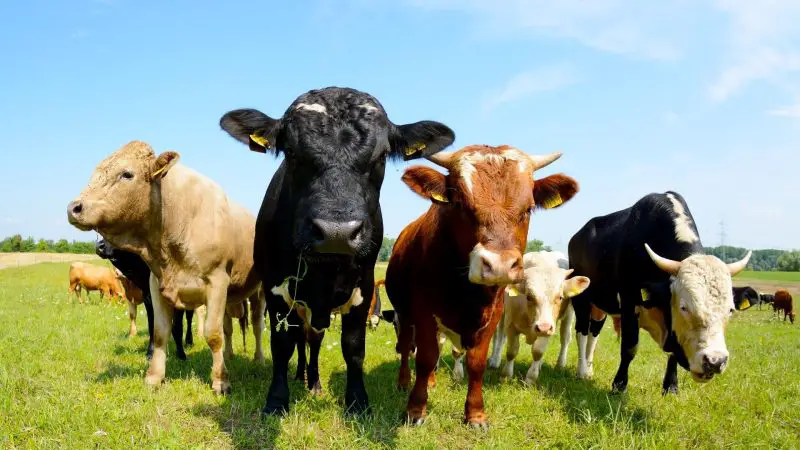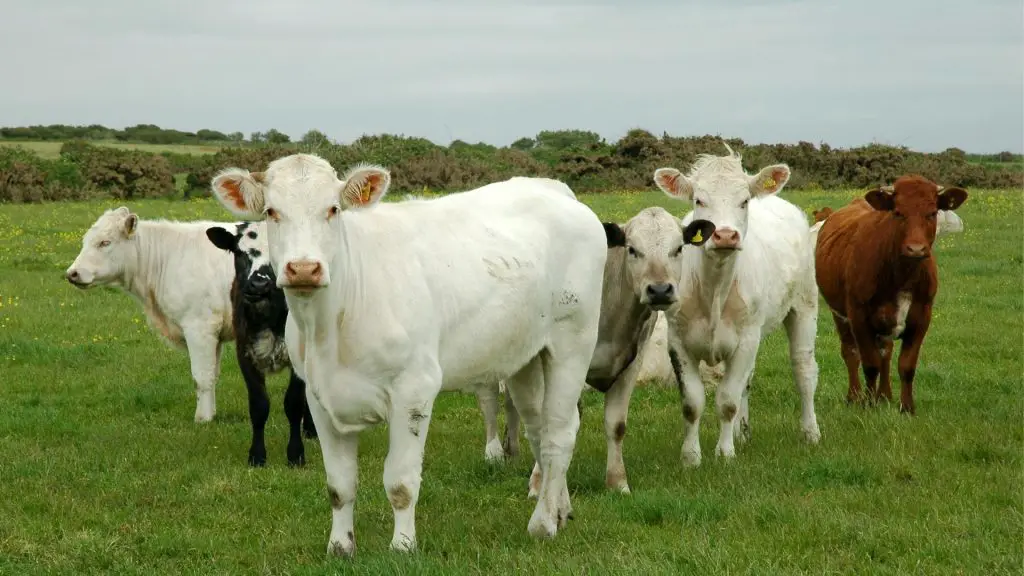You may think that hair is for humans and fur is for animals. In reality, only some animals have fur as their coating only grows at certain points. How come some animals have hair? What animals can have long hair like humans? In the case of cows, you may think that they have fur.
Do cows have fur? Cows don’t have fur as they have hair instead. Many animal lovers refer to it as ‘fur,’ but it doesn’t meet the criteria of being short and coarse. Thus, the appropriate term for it is ‘hair.’ Furthermore, the dense, hairy coating is referred to as fur, which is found on foxes, chinchillas, coyotes, rabbits, raccoons, possums, and seals.
If the explanation is not enough to clarify things to you, the rest of the article will give you enlightenment. You’ll realize the exact thing as you continue reading.
Do Cows Have Hair on Their Body?

Cows have hair on their body, even though their hair sprouts from a certain point like fur. However, cows are mammals that are always recognized with hair. Thus, the cow’s body is wrapped with hair.
What Is Cow Hair Called?

Cow’s hair is called a hair coat. Based on a study, the cow’s part with the thickest hair is the rib region. The longest hair is found in the lumbar, rib, and lateral regions.
Colors vary as there are various cow breeds. The climates of the area where the cows live also affect the properties of the cow’s hair coat.
What Is the Hair of a Cow Used For?

Primarily, the hair and fur of animals have similar uses. These coatings are regarded for waterproofing, camouflaging, protection, thermoregulation, and sensory purpose. They’re also used for many products.
Cowhide, a cow’s natural skin with hair is the basic material to create personal belongings such as leather jackets, shoes, wallets, bags, and belts.
It’s also useful in making carpets, car leather, and furniture. Cowhide is a big part of Nguni culture practiced by people in the province of KwaZulu-Natal of South Africa.
The hides that Nguni people create are colorful, beautifully patterned, and unique. They use it to make shields and clothing such as the traditional skirt and loincloth. You’ll find dyed cowhides, but most quality ones are in their original color.
Do You Cut Cows Hair?

Cutting cow’s hair is done to give way for healthy new growth. Cow’s hair has a growing cycle of 90 days, but it depends on the season. If you need to show off your cow with a healthy mane in a show, you have to do the cutting 90 days before it. Cow’s hair naturally grows for winter as the coat provides the warmth necessary for the cold season.
Can Cows Be Bald?

Cows can’t be bald as it’s mentioned in the study that the coating layer improves the water vapor and heat conductance in hot, humid environments. This factor also contributes to the success of a cow’s reproductive performance.
An occasional, small area of skin damage is acceptable among cows. But hair loss can bring some consequences such as:
- Pain or discomfort
- Lameness
- Reduces cows’ productivity and profitability
What Are Fluffy Cows Called?
Fluffy cows or highland cattle have been in existence since the 6th century. They’re originally from the Highland regions and the Outer Hebrides islands of Scotland. But they are all over the world and countries like the USA, Australia, and Canada nowadays.
Fluffy cows are known for their shaggy coatings and friendly temperament. They can be in colors black, white, and red. They have a double coating of hair where the outer layer is oily, and the undercoat is soft and fluffy.
The reddish one is the most common due to the selective breeding favored by Queen Victoria when she stayed in the Scottish Highlands.
How Much Is a Fluffy Cow?
Even though a fluffy cow becomes an adult, it makes an adorable and exceptional pet due to the miniature size. It’s fluffy, so it’s perfect for cuddling. The price starts at $1,800, and it can be as much as $3,500.
The price variations are based on size and make. In addition, there are 26 breeds of these fluffy cows that you can choose from.
Frequently Asked Questions
Are Fur and Hair the Same?
Fur and hair are both essential to animals as these parts provide protection, camouflaging, sensory purposes, and thermoregulation. Both of them have keratin, so it’s hard to tell them apart when referring to chemical composition.
To find the difference between fur and hair, there’s a need to look at types of hair, texture, and growth pattern.
- Types of hair – Guard hair and ground hair are two types of hair. The former is usually long and finer, while the latter is thick and short. If an animal has both, it means it has fur.
- Texture – The texture of fur and hair is different. Nonetheless, the size of the animal is another factor. In general, fur is thicker and denser than hair. The follicle is particularly the same, but the thickness varies. For instance, raccoons have fur, and it’s almost impossible to find their skin. When looking at a cow’s hair, it’s not too densely packed.
- Growth pattern – As mentioned, an animal that has fur when it’s covered by both guard hair and ground hair. These types of hair go through a cycle with three phases which are telogen, anagen, and catagen. The difference occurs in the anagen phase when ground hair grows in sync in just a short period. It means that the hair grows to a fixed length.
Guard hair remains in the anagen phase for a longer time. Hence, cutting is necessary at some point. It’s the reason why cows are sent to groomers as humans go to the salon.
Which Animals Have Hairs?
Some domesticated animals have hairs like cattle, cats, dogs, foxes, gerbils, horses, and pigs. Even though a cow’s coating grows at a specified point of exceptional coverage, the proper term for its coating is hair.
Which Animals Have Fur?
Leopards, lynx, martens, otters, raccoons, seals, sables, possums, minks, beavers, and skunks have fur.
What Is a Bald Faced Cow?
A bald faced cow is a crossbreed from Hereford cattle and Aberdeen Angus. Angus bull is also used to obtain smaller cows and calving ease. You can easily distinguish it by its white face and black body. Apart from the appearance, here are some things that you have to learn about this crossbreed.
- Use – This is mainly created for beef. Even the small version is a great beef source. However, some calf or cow producers keep this breed because of increasing cattle production. Because of the process, the offspring have improved reproductive performance despite not having as much hybrid vigor as their mothers.
- Temperament – A bald faced cow is oozing with good nature and docility.
- Health – Hybrid vigor is the primary reason why this crossbreed is created. This is the trait that keeps them apart from other cattle breeds. Moreover, it’s known as healthier than other purebred or the mongrel type.
Pros:
- Adaptable to different kinds of climate
- Hybrid vigor
- Fertility
- Accepted in most sale barns
- Profitability
- Good survival rate
- Longevity
- Efficient at beef production
- Excellent growth rate
- Good mothering ability
- The miniature version is suitable for small acreages
- Qualified in most premium beef programs like Certified Angus Beef
Cons:
- Occasional calving issues
- May be bland
- Possibility of putting on fat instead of muscle
- Expenses and challenges on pursuing a breeding program
Summary
Cows don’t have fur. Based on the given facts and criteria, cows have hair. That’s why cows go through grooming as their hair can grow longer. Cows are mammals, just like humans. Since mammals have hair, so do cows and humans! Another confirmation that they have hair is that you can easily look for the cow’s skin. When an animal has fur, you can’t check the skin too quickly.
List of Sources
Fertility and Hair Coat Characteristics of Holstein Cows in a Tropical Environment
